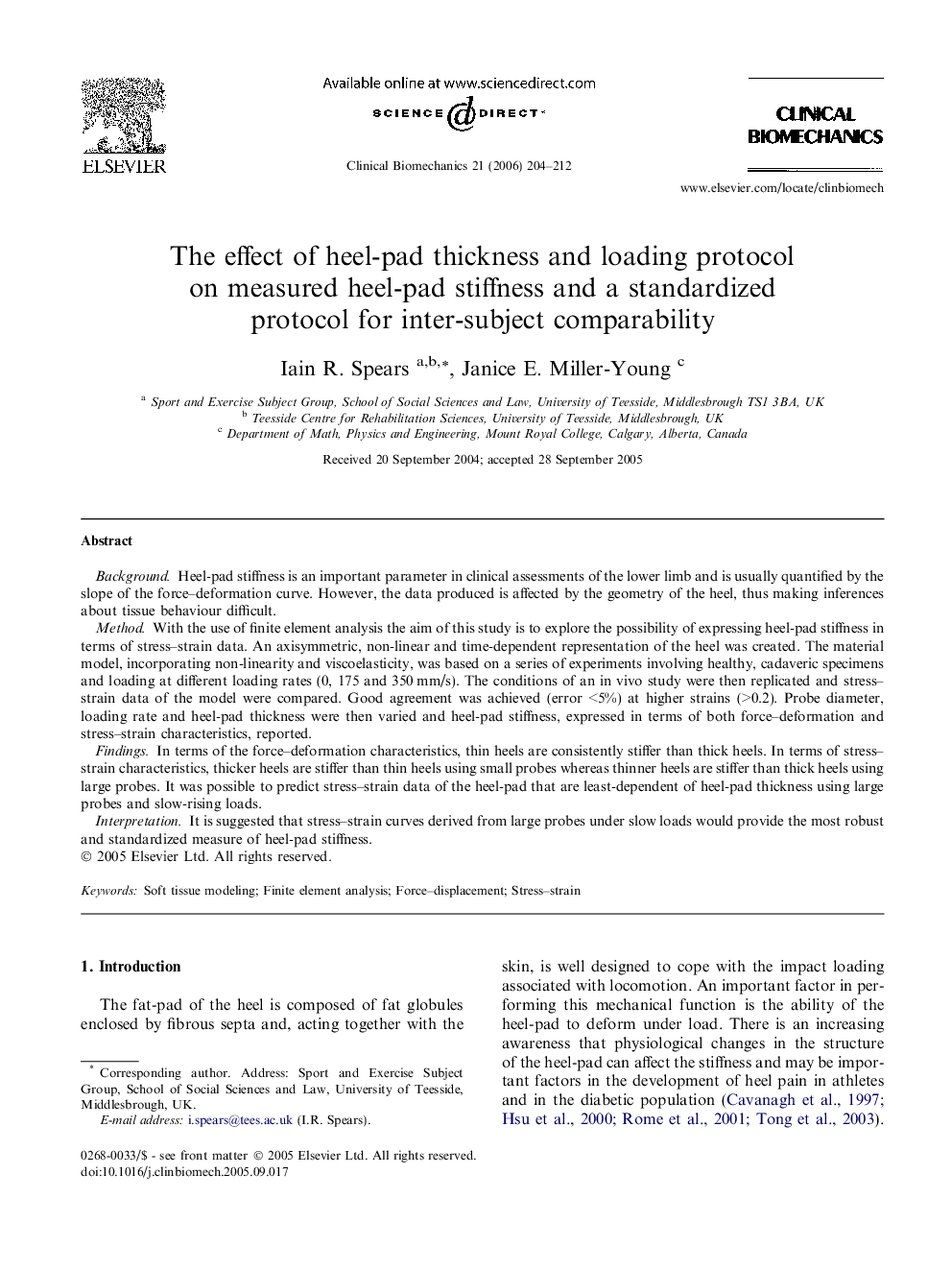| Article ID | Journal | Published Year | Pages | File Type |
|---|---|---|---|---|
| 4051781 | Clinical Biomechanics | 2006 | 9 Pages |
BackgroundHeel-pad stiffness is an important parameter in clinical assessments of the lower limb and is usually quantified by the slope of the force–deformation curve. However, the data produced is affected by the geometry of the heel, thus making inferences about tissue behaviour difficult.MethodWith the use of finite element analysis the aim of this study is to explore the possibility of expressing heel-pad stiffness in terms of stress–strain data. An axisymmetric, non-linear and time-dependent representation of the heel was created. The material model, incorporating non-linearity and viscoelasticity, was based on a series of experiments involving healthy, cadaveric specimens and loading at different loading rates (0, 175 and 350 mm/s). The conditions of an in vivo study were then replicated and stress–strain data of the model were compared. Good agreement was achieved (error <5%) at higher strains (>0.2). Probe diameter, loading rate and heel-pad thickness were then varied and heel-pad stiffness, expressed in terms of both force–deformation and stress–strain characteristics, reported.FindingsIn terms of the force–deformation characteristics, thin heels are consistently stiffer than thick heels. In terms of stress–strain characteristics, thicker heels are stiffer than thin heels using small probes whereas thinner heels are stiffer than thick heels using large probes. It was possible to predict stress–strain data of the heel-pad that are least-dependent of heel-pad thickness using large probes and slow-rising loads.InterpretationIt is suggested that stress–strain curves derived from large probes under slow loads would provide the most robust and standardized measure of heel-pad stiffness.
